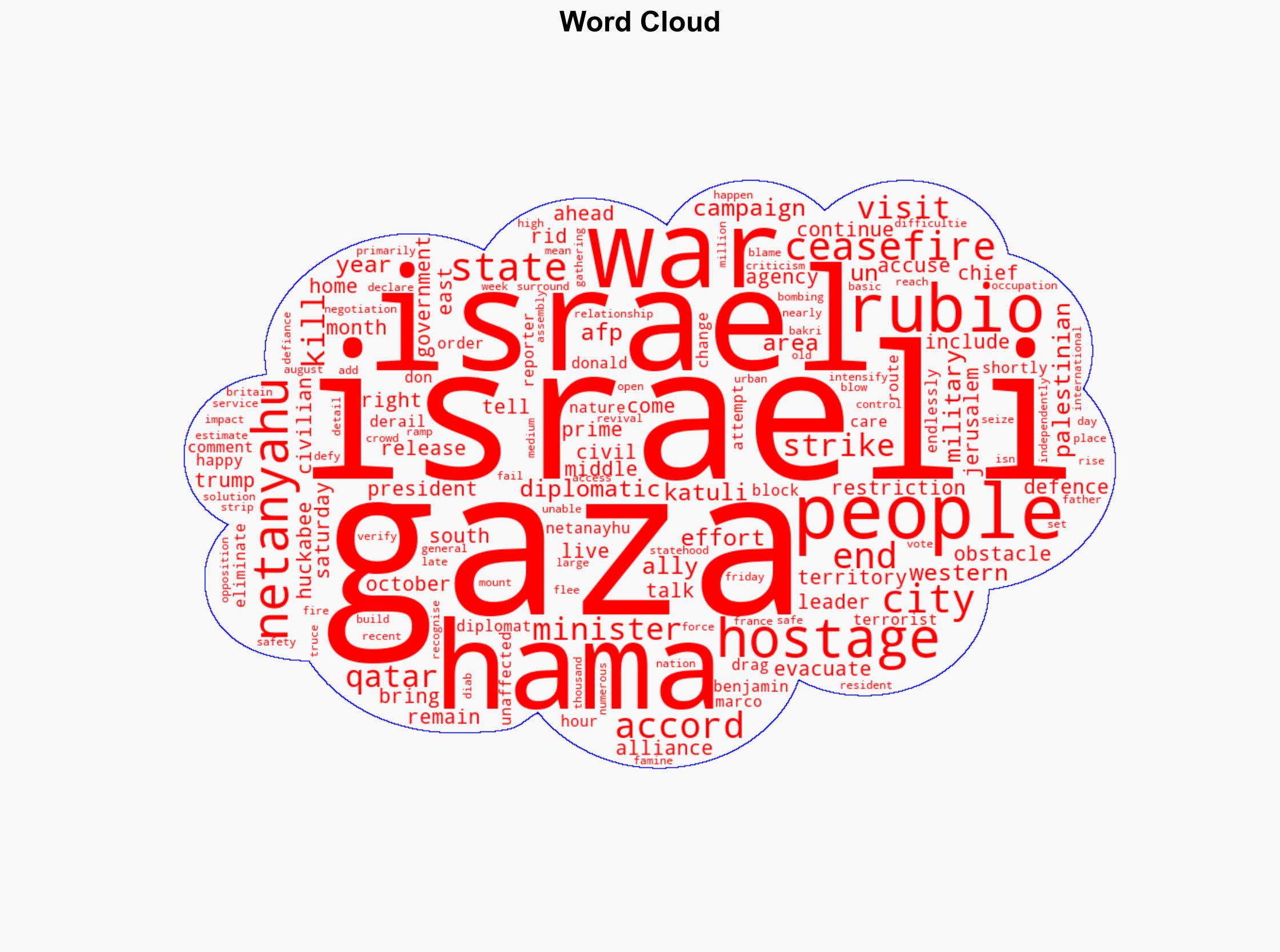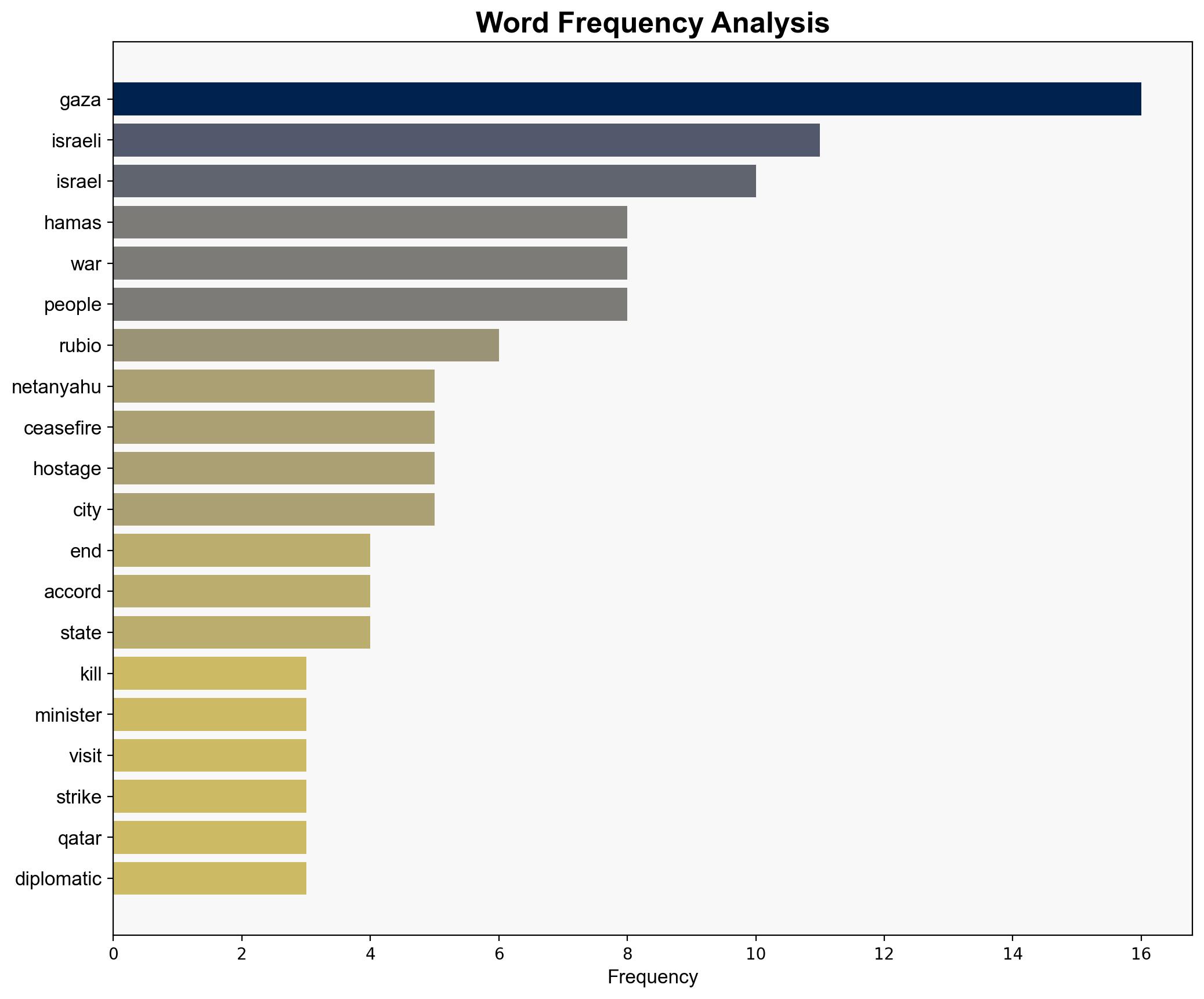Netanayhu Says Killing Hamas Leaders Is Route To Ending Gaza War – International Business Times
Published on: 2025-09-13
Intelligence Report: Netanyahu Says Killing Hamas Leaders Is Route To Ending Gaza War – International Business Times
1. BLUF (Bottom Line Up Front)
The most supported hypothesis is that Israel’s strategy to eliminate Hamas leaders aims to weaken the group’s operational capabilities and force a resolution to the Gaza conflict. Confidence in this assessment is moderate due to the complexity of geopolitical dynamics and potential unintended consequences. It is recommended to enhance diplomatic efforts alongside military actions to mitigate international backlash and explore ceasefire opportunities.
2. Competing Hypotheses
Hypothesis 1: Israel’s focus on eliminating Hamas leaders is primarily a military strategy to degrade Hamas’s operational capabilities and expedite the end of the Gaza conflict. This approach assumes that decapitation of leadership will lead to organizational collapse or significant weakening.
Hypothesis 2: The strategy is a political maneuver by Netanyahu to consolidate domestic support and demonstrate a strong stance against terrorism, regardless of its effectiveness in ending the conflict. This hypothesis suggests the actions are more about political optics than achieving a strategic military objective.
Using the Analysis of Competing Hypotheses (ACH) 2.0, Hypothesis 1 is better supported by the evidence of intensified military campaigns and the historical precedent of targeting leadership in counter-terrorism operations. However, Hypothesis 2 cannot be dismissed due to the political context and Netanyahu’s need to maintain political support.
3. Key Assumptions and Red Flags
– Assumption: Eliminating leaders will significantly disrupt Hamas operations. This assumes a lack of succession planning within Hamas.
– Red Flag: Potential underestimation of Hamas’s resilience and ability to adapt or retaliate.
– Cognitive Bias: Confirmation bias may lead to overemphasis on military solutions while neglecting diplomatic avenues.
– Missing Data: Lack of independent verification of casualty figures and the impact of strikes on Hamas’s command structure.
4. Implications and Strategic Risks
– Escalation Risk: Intensified military actions could lead to broader regional conflict or increased terrorist activities.
– Geopolitical Impact: Strained relations with international allies, particularly if civilian casualties increase.
– Psychological Impact: Heightened tensions and fear among civilians in Gaza and Israel, potentially fueling further radicalization.
– Economic Consequences: Prolonged conflict could disrupt regional trade and economic stability.
5. Recommendations and Outlook
- Enhance diplomatic engagements with regional and international stakeholders to explore ceasefire opportunities.
- Increase intelligence efforts to assess Hamas’s internal dynamics and potential succession plans.
- Scenario Projections:
- Best Case: Successful decapitation leads to a weakened Hamas and a negotiated ceasefire.
- Worst Case: Escalation into a broader conflict with increased civilian casualties and international condemnation.
- Most Likely: Continued military operations with intermittent diplomatic efforts, leading to a protracted conflict.
6. Key Individuals and Entities
– Benjamin Netanyahu
– Marco Rubio
– Donald Trump
– Brian Katuli
– Bakri Diab
7. Thematic Tags
national security threats, counter-terrorism, regional focus, geopolitical strategy





